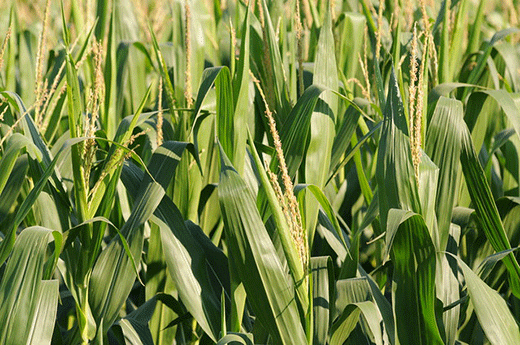
Irrigation needs within a 30 mile radius often increase when an ethanol plant opens, a study from Kansas State University shows. (File photo)
Study: Land values, irrigation needs increase when ethanol plant opens
K-State agricultural economists take a look at 15 years of data
April 21, 2021
MANHATTAN, Kan. – Kansas State University agricultural economists have found that the growth of ethanol plants in the state over the past 20 years has had an impact on irrigation and land values.
Gabe Sampson, an agricultural economist with K-State Research and Extension, said that during the past 20 years, Kansas has seen an increase from three ethanol plants to 12, boosting the state’s capacity from 40 million gallons produced per year to more than 500 million gallons per year.
In a study of that growth, Sampson and his colleagues found that when an ethanol plant opens, irrigated land values within a 30 mile radius go up by 9-10%, and non-irrigated land values improve by 5-6%.
Listen to an interview by Eric Atkinson with Gabe Sampson on the weekday radio program, Agriculture Today
But growth in the ethanol market has also put greater demand on water resources since corn is the staple fuel stock for production in Kansas. Corn also is the most water intensive crop grown in the state.
“The two questions we were most interested in is whether the ethanol market growth in Kansas has affected irrigated water use through incentivizing corn acreage, and what has been the effect on irrigated and non-irrigated land values,” Sampson said.
The researchers studied 23,000 irrigated fields in Kansas over a 15-year period (2003 to 2017).
“We looked at irrigated fields in the neighborhood of an ethanol plant (within 30 miles) and we compare irrigation water use before and after the plant opened relative to water use for fields outside the neighborhood,” Sampson said.
“We find pretty clear evidence that irrigation water use does increase for a field when an ethanol plant opens up,” he added. “We find that for a 10% increase in ethanol refining capacity in that neighborhood, total irrigation water use increases by about five acre inches per field per year, so that’s about a half of an acre foot per field per year.”
That’s a significant amount of irrigated water dedicated to ethanol production: “If we tally the cumulative effects over the past 15-20 years of ethanol market expansion, we predict that the cumulative effect on water use is about 4% per year currently,” Sampson said.
The tradeoff of increased irrigated corn acres, he added, may be the decreased irrigated acres of two other water-intensive crops: soybeans and alfalfa.
Regarding the research team’s findings on land values, Sampson said “there’s nothing inherently wrong about land values going up.”
“But there’s two points I would make: The value of land is often times the largest component of a producer’s wealth, so any factor that is affecting land values is important from a policy perspective because it’s affecting producer wealth.
“The second point is if ethanol market expansion is being supported by government policy and subsidies spent on fuel mix mandates and things like that, then to the degree to which land values go up due to ethanol market expansion, those land values staying high might depend on continued government support for those policies going forward. If those policies go away, one might be concerned there would be a corresponding drop in land values.”
Sampson said the research findings will be used to inform agricultural policy on groundwater in arid and semi-arid states, such as Kansas.
“If we continue to see ethanol market expansion in these arid and semi-arid states, there might be concerns about added stress placed on socially valuable groundwater stocks,” he said. “It’s something we need to take into considerations when we’re evaluating these bio-energy policies.”
Sampson said the research will be published later this summer. Updated information on a variety of agricultural economics topics is also available online from K-State Research and Extension.

